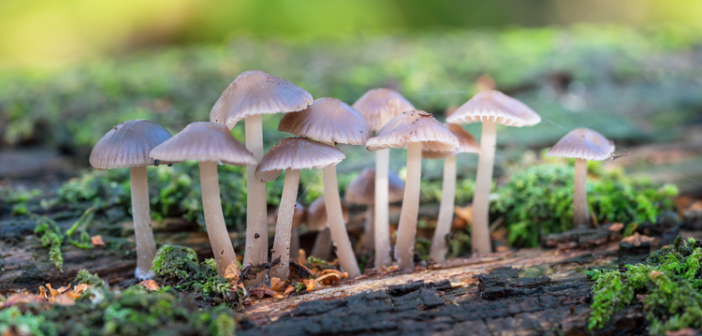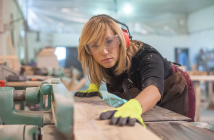Mycology, the study of fungi, is a field that is gaining interest for its ecological significance and potential therapeutic applications. Within this domain, cultivating magic mushrooms, specifically Psilocybe species, is becoming more common for scientific research and educational purposes. Cultivating these mushrooms requires a thorough understanding of their life cycle, environmental needs, and the legal considerations surrounding their growth, as many species are classified as controlled substances in several jurisdictions.
The cultivation process starts with sterile technique to avoid contamination, followed by the preparation of substrates that provide the necessary nutrients for the mycelium to thrive. The environment must be carefully controlled to maintain the correct temperature, humidity, and light conditions to stimulate fruiting. Those seeking to grow magic mushrooms for study must be meticulous in their approach to ensure a successful and contaminant-free cultivation.
Understanding Mycology
Mycology is the study of fungi, a kingdom of organisms crucial to many ecological systems. This field encompasses the growth, genetics, and biochemistry of fungal species, including magic mushrooms.
Fungi Basics
Fungi are a diverse group classified into their own kingdom, separate from plants and animals. They play vital roles in decomposition, nutrient cycling, and symbiotic relationships with other organisms. The basic structure of fungi includes mycelium, a network of filaments called hyphae, and in many cases, they produce reproductive structures known as spores. Magic mushrooms, or Psilocybe species, are characterized by their production of psychoactive compounds like psilocybin.
- Cell Structure: Fungal cells exhibit a rigid cell wall composed of chitin.
- Reproduction: They may reproduce sexually or asexually through spores.
Importance of Mycological Studies
Mycological studies shed light on critical biological processes and environmental interactions. Research in this field drives advancements in biotechnology, medicine, and agriculture. For instance, the cultivation of magic mushrooms has aided in understanding neurological processes due to their psychoactive substances.
- Bioremediation: Fungi have shown potential in pollution mitigation through the breakdown of contaminants.
- Drug Discovery: Compounds derived from fungi, such as antibiotics and enzymes, have transformed healthcare.
Mycology offers a detailed view of an often-overlooked kingdom with significant scientific and therapeutic potential.
Preparation for Mushroom Cultivation
Proper preparation is crucial for successful mushroom cultivation. It involves selecting appropriate strains and ensuring a sterile workspace to minimize contamination.
Selecting Mushroom Strains
One must consider the desired attributes such as growth rate, yield, and environmental needs when choosing mushroom strains. Common strains for cultivation include Psilocybe cubensis and Psilocybe cyanescens. Resources like spore banks or mycology shops provide verified spores or culture syringes.
Creating a Sterile Environment
Creating and maintaining a sterile environment is a pivotal aspect of mushroom cultivation.
- Workspace: Utilize a space that can be thoroughly cleaned and is free from drafts.
- Sterilization Tools: Autoclaves or pressure cookers are essential for sterilizing substrates and instruments.
- Techniques: Practicing aseptic techniques such as wearing gloves, using disinfectants, and flame-sterilizing implements is vital to prevent contamination.
One must ensure all materials and surfaces are sterilized before introducing mushroom spores.
Cultivation Process
The cultivation process involves critical stages to support the growth of magic mushrooms for mycological study: inoculation, incubation, and fruiting. Each step must be followed with precise conditions to ensure success.
Inoculation
Inoculation is the phase where spores or mycelium culture are introduced to a sterile substrate. The most common substrates include grains, such as rye or brown rice flour. The substrate must be sterilized to prevent contamination from other fungi or bacteria. Practitioners typically use a syringe or an inoculation loop for this process, ensuring the environment is as sterile as possible.
Incubation
Post-inoculation, the substrate needs to be incubated. During incubation, the objective is for the mycelium to colonize the substrate. The key considerations during this phase are temperature and humidity control. The ideal temperature range is between 75°F to 81°F (24°C to 27°C), and humidity levels should be maintained at 95-100%. The substrate should be kept in the dark, and this phase generally takes between 10 to 14 days.
Fruiting
The final phase is fruiting, where actual mushroom formation occurs. The colonized substrate, now called a “cake,” is exposed to lower temperatures, usually around 68°F to 74°F (20°C to 23°C), and a higher level of indirect light. High humidity, around 92-95%, is also crucial to support mushroom development. Adequate air exchange should be provided to prevent carbon dioxide build-up, which can adversely affect mushroom growth. Fruiting typically takes 5 to 12 days, depending on the species and conditions.
Harvesting and Preservation
Successful cultivation culminates in effective harvesting and preservation of magic mushrooms, which ensures the integrity of specimens for mycological study.
Harvesting Techniques
Harvesting should commence just as the veil under the mushroom cap begins to tear. Using gloves or sterilized tools, the individual should gently twist and pull each mushroom from the substrate. Care must be taken to minimize damage to the mycelium to allow for subsequent flushes.
Storing Spores
Spores can be stored for future research and cultivation. To do this, one places a mature mushroom cap, gills facing down, on a piece of sterile foil for several hours. The spores will drop and leave a print, which can then be sealed in an airtight container and stored in a cool, dark place.
- Short-Term Storage: Sealed in ziplock bags in a refrigerator, where they can remain viable for a few months.
- Long-Term Storage: In a freezer, spore prints can last for several years, especially when vacuum-sealed.
Preserving Fungi
For preserving the harvested fungi:
- Drying: Spread fresh mushrooms on a screen or hanging net and allow to air dry in a well-ventilated room or use a food dehydrator at a low temperature.
- Storing Dry Mushrooms: Once completely dry, mushrooms should be stored in airtight containers with desiccant packets to prevent moisture absorption.
- Temperature: The containers must be kept in a cool, dark location to prolong potency.
Duration: Properly dried and stored, mushrooms can maintain their features for many months, facilitating long-term study.





สุขภาพที่ดีเป็นพื้นฐานที่สำคัญสำหรับการมีคุณภาพชีวิตที่ดีในสังคมปัจจุบัน การดูแลสุขภาพที่ดีไม่เพียงแต่เป็นเรื่องของการรักษาโรคและการออกกำลังกายเพื่อความแข็งแรงของร่างกายเท่านั้น แต่ยังเป็นการรักษาสุขภาพจิต การสร้างความสุขในชีวิต และการเสริมสร้างความสัมพันธ์ที่ดีกับผู้อื่น การมี สุขภาพที่ดี ในสังคมปัจจุบันไม่ได้หมายถึงการรักษาโรคและป้องกันการติดเชื้อเท่านั้น แต่ยังเกี่ยวข้องกับการรับรู้ถึงสุขภาพจิตและความสมดุลทางจิตใจ การดูแลรักษาภาวะสุขภาพที่ดีในด้านทั้งร่างกายและจิตใจจึงเป็นสิ่งสำคัญในการพัฒนาชีวิตที่มีคุณภาพและมีความสุขในสังคมปัจจุบัน
Growing magic mushrooms for mycological exploration offers a captivating journey into the realm of fungi. Beyond mere cultivation, it’s an art blending science with wonder. Enthusiasts delve into the intricacies of mycelium networks, fostering an appreciation for nature’s unseen marvels. As they nurture these fungi, they unlock secrets of ecosystems and medicinal potential. Amidst this scientific pursuit, the allure of magic mushrooms transcends to corporate entertainment magician where a magician’s sleight of hand meets the mystique of psychedelia. Here, mycology becomes a stage for intrigue, captivating audiences with the enchantment of both science and spectacle.
Nice! Thanks for the good info. This guide provides a thorough overview of cultivating magic mushrooms for mycological research, covering essential techniques, safety protocols, and best practices. It’s an invaluable resource for both novice and experienced mycologists looking to delve into the fascinating world of fungal growth and study.
Good health
การเล่นเกมสล็อตออนไลน์นั้น นอกจากจะเป็นเกมที่มอบความสนุกและความตื่นเต้นให้กับผู้เล่นแล้ว ยังเป็นเครื่องมือที่ยอดเยี่ยมในการฝึกฝนทักษะสมาธิและการควบคุมตนเองในสถานการณ์ที่ต้องใช้ความนิ่ง ความแม่นยำ และการตัดสินใจอย่างรอบคอบ ซึ่งความสามารถในการควบคุมอารมณ์และความคิดในระหว่างการเล่นนั้น อาจเป็นกุญแจสำคัญที่นำพาผู้เล่นไปสู่ชัยชนะ
สมาธิเป็นปัจจัยที่สำคัญในการเล่นเกม สล็อตเว็บตรง การมีสมาธิที่ดีช่วยให้ผู้เล่นสามารถสังเกตรูปแบบของเกม วงล้อที่หมุน และฟังก์ชันต่างๆ ของเกมได้อย่างชัดเจน เมื่อเรามีสมาธิที่มั่นคง เราจะสามารถจัดการกับสถานการณ์ที่คาดเดาไม่ได้ในเกมได้ดีขึ้น และลดโอกาสในการตัดสินใจที่เกิดจากอารมณ์ชั่ววูบ
ยกตัวอย่างเช่น ในช่วงเวลาที่เกมหมุนหลายรอบโดยไม่มีการชนะ ผู้เล่นที่มีสมาธิจะไม่รู้สึกกดดันหรือเร่งรีบในการวางลงทุน พวกเขาจะมีความสามารถในการรับรู้สถานการณ์ และปรับตัวให้เหมาะสมกับรูปแบบการเล่นอย่างมีสติ ซึ่งสิ่งนี้ช่วยให้สามารถรักษางบประมาณการเล่นได้อย่างยั่งยืนและเล่นได้นานขึ้น
ความนิ่งหมายถึงการสามารถควบคุมอารมณ์ ไม่ว่าจะเป็นความตื่นเต้น ความกังวล หรือความหงุดหงิดในระหว่างการเล่น ซึ่งสิ่งนี้เป็นสิ่งสำคัญในการตัดสินใจ การรีบเร่งในการลงทุนหรือการเปลี่ยนแผนที่ไม่รอบคอบอาจทำให้ผู้เล่นสูญเสียโอกาสที่จะชนะในระยะยาวได้
การควบคุมอารมณ์และรักษาความนิ่งเมื่อเผชิญกับสถานการณ์ที่เกมไม่เป็นไปตามคาดหวัง จะช่วยให้ผู้เล่นสามารถตัดสินใจได้อย่างรอบคอบ ซึ่งความแม่นยำในการวางลงทุนนี้ จะส่งผลให้เกิดผลลัพธ์ที่ดีขึ้น โดยเฉพาะอย่างยิ่งในเกมสล็อตที่ต้องใช้การจัดการเงินทุนอย่างมีระบบ